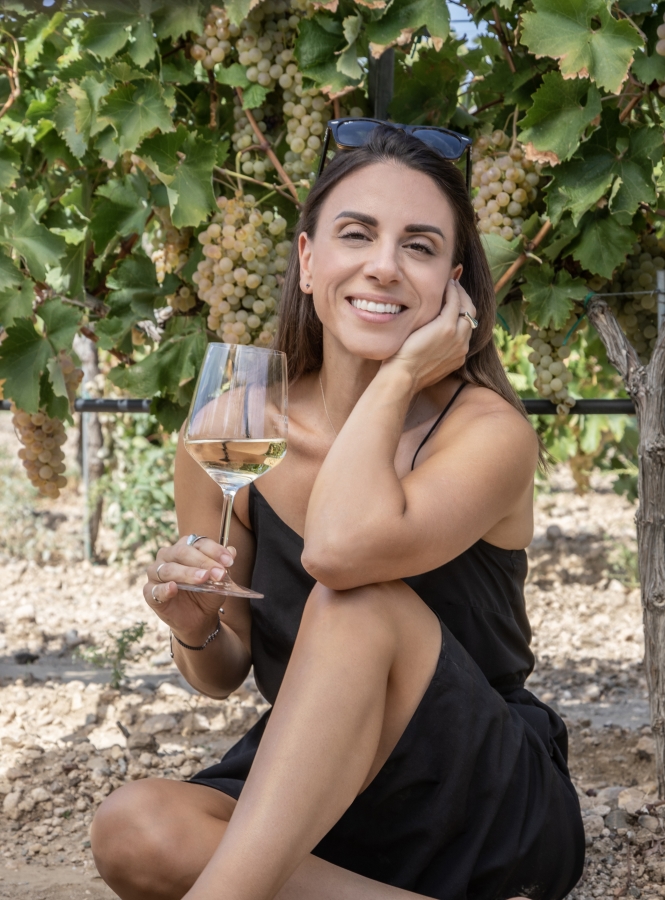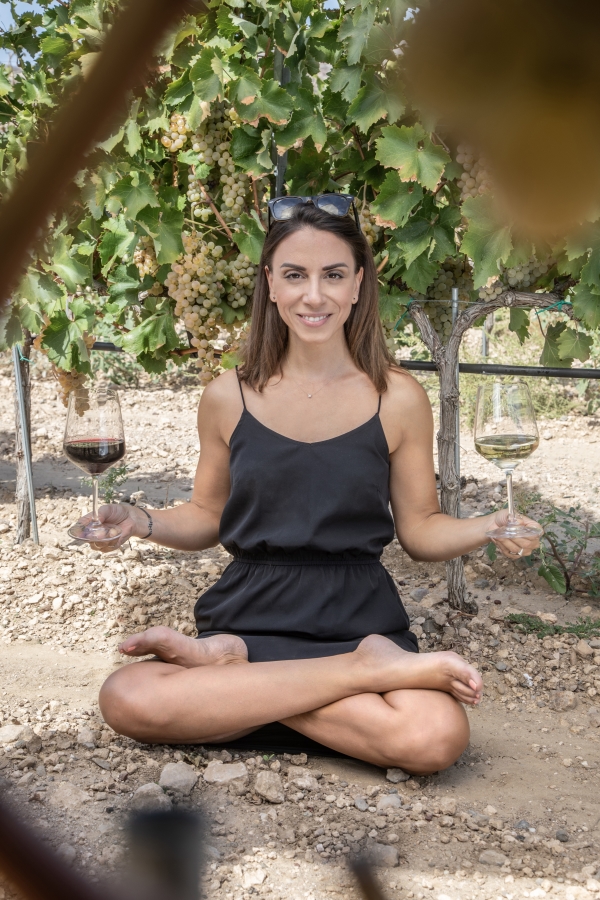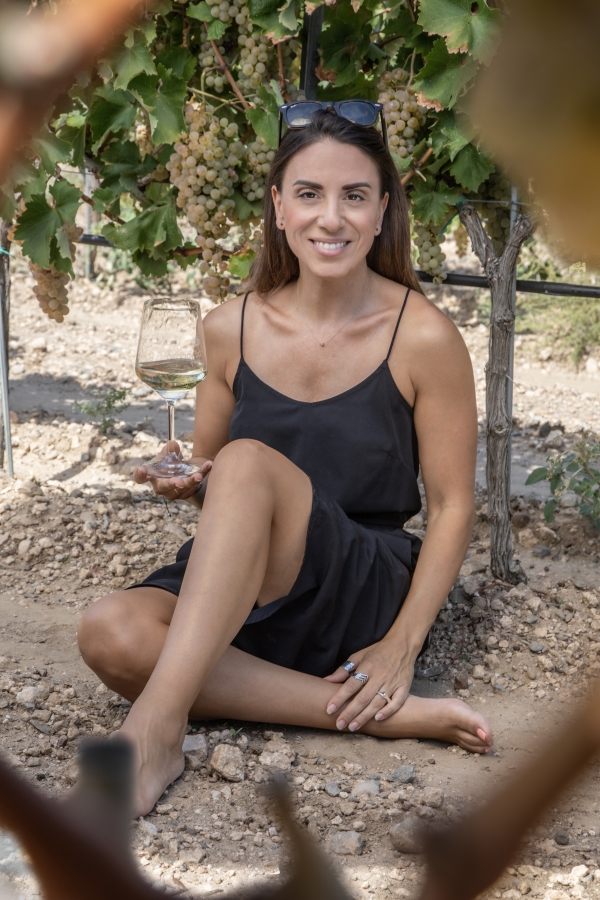Maria Maltezou, the new generation of Strofilia winery, guides us through the vineyards of the estate to the wine of past and the future.

Starting in the 1980’s and with love for the art of viticulture, Strofilia winery encompasses a wide range of wine production from both local and international varieties. By certifying a range of its products as vegan in 2020, the world-renowned V-Label brand and consumer shopping guide, rewarded the efforts of a team for whom wine is not just a cog in production but a key driver of growth, with endurance over time and indelible memories of images around every family table.
H.A: Substance or presentation: Where do you think a winemaker should focus?
Maria Maltezou: The winemaker is by nature a restless, multitasking person. It is difficult to separate the parts of the production process into more or less necessary. Every little detail requires attention and consistency, either in the vineyard or in the winemaking. Priority if I were to put a chronological order, it would be in the vineyard. After all, the quality of the grape is what will determine the qualitative characteristics of the harvest so that the winemaker can afterwards build up his vision.

H.A: How would you describe the daily life in the operation of the winery? Is there interest in the wine industry from young people?
Maria Maltezou: In our industry, everyday life changes depending on the seasons. Summer and autumn belong to the vintage and the harvest in relation to the region where each winemaker is located. Winemaking, bottling and pruning take the lead.
I could say with certainty that one can find interest in a winery 12 months of the year and be busy if wishes to be occupied with different parts each time (vineyard, production, cellar, winemaking, commercial). Beyond cultivation and production elements , an essential part of a winery is undoubtedly its commercial department. Sales was, is and will be the core impulse for the smooth operation and profitability of the business.
H.A: What is the concept behind the design of a new wine? (varieties, label, bottle color, etc.)
Maria Maltezou: The million euro question. But let’s take them separately.
Varieties: Selection based on the potential of the winery and market needs. We may have planted varieties that commercially “don’t pull off”.
Label: Apart from the information that the label must include, appearance is subjective in parts, but it should always follow the right direction commercially, especially when we know the audience we are addressing.
Bottle: The image of a product is particularly important. But the safety of the wine comes first. Taking both into account, we proceed to choose the bottle.
‘If I Had Only Known Then What I Know Now!
Εxperience teaches our next moves. Many times, excellent wines have been disserved due to bad packaging, while on the contrary, mediocre wines with excellent packaging have emerged.

H.A: Climate change and vineyards. Do you think it will negatively affect the quality of the wine to a greater extent?
Maria Maltezou: Climate change has affected and continues to affect wine quality quite significantly. In the last 10 years there have been upheavals in the harvest due to intense weather events. Continuous rainfalls prior to the harvest during summer months or correspondingly increased temperatures strain the vine and cause diseases that usually source to irreparable damage. The future of the Greek wine producer is probably the mountain vineyards. For the last 20 years, Strofilia has been systematically investing in mountain vineyards in Asprokampos in Nemea having achieved excellent results and quality grapes even in strenuous harvests.
H.A: Promotion and sale of wine has increased significantly in recent years with its gradually rising presence in restaurants, hotels and wine bars. Are you satisfied with the level of service and proper presentation of the wines? Is there any way to ensure that the consumer will receive the final product in ideal conditions?
Maria Maltezou: The continuous training of the staff by professionals in the field and the promotion of fine dining cuisine, together with the presence of wine bars, have altered the catering game. Most of the endpoints as well as the cellars are sufficiently updated and serve the consumer at a high level compared to previous years. We are moving to a new generation of consumers with great demands but also knowledge about the wine they choose, thus raising the bar for us producers as well.

H.A: What are the next suggestions of Strofilia winery in both Greek and international market?
Maria Maltezou: The new project of Strofilia is Oenovation. It is the interface of research and innovation for the output of Strofilia products. It includes 2 research projects and 3 innovations (applied research).
Research:
1). Research by the Agricultural University of Athens (ΑUA) for the evaluation of the Nemea region (six wineries are participating, including Strofilia).
2). Research of the A.U.A. which is financed by Strofilia alone. It refers to the use of ultrasound in the creation of wine.
Innovation:
1). Formation of the vegetative wall as Lyra in Strofilia vines
2). Analysis of aromas during aging
3). Malolactic fermentation before alcoholic fermentation. The research of the A.U.A in Agiorgitiko was utilised.
A person who only remembers the past is old, regardless of age. So are businesses. And trust me! Strofilia is not old at all but reminisces about past, as this was the very thing that shaped the winery into what it is today. Creates in the present and envisions the future.





